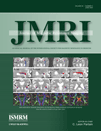Improved time-of-flight magnetic resonance angiography with IDEAL water-fat separation
Abstract
Purpose
To implement IDEAL (iterative decomposition of water and fat using echo asymmetry and least squares estimation) water-fat separation with 3D time-of-flight (TOF) magnetic resonance angiography (MRA) of intracranial vessels for improved background suppression by providing uniform and robust separation of fat signal that appears bright on conventional TOF-MRA.
Materials and Methods
IDEAL TOF-MRA and conventional TOF-MRA were performed in volunteers and patients undergoing routine brain MRI/MRA on a 3T magnet. Images were reviewed by two radiologists and graded based on vessel visibility and image quality.
Results
IDEAL TOF-MRA demonstrated statistically significant improvement in vessel visibility when compared to conventional TOF-MRA in both volunteer and clinical patients using an image quality grading system. Overall image quality was 3.87 (out of 4) for IDEAL versus 3.55 for conventional TOF imaging (P = 0.02). Visualization of the ophthalmic artery was 3.53 for IDEAL versus 1.97 for conventional TOF imaging (P < 0.00005) and visualization of the superficial temporal artery was 3.92 for IDEAL imaging versus 1.97 for conventional TOF imaging (P < 0.00005).
Conclusion
By providing uniform suppression of fat, IDEAL TOF-MRA provides improved background suppression with improved image quality when compared to conventional TOF-MRA methods. J. Magn. Reson. Imaging 2009;29:1367–1374. © 2009 Wiley-Liss, Inc.




